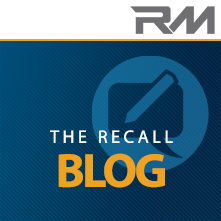How to Win Back Lost Customers and Turn Recalls into Lifelong Loyalty
How to Win Back Lost Customers and Turn Recalls into Lifelong Loyalty
Winning back lost customers doesn’t require gimmicks, it requires timing, trust and clean data. Learn how recalls can help you re-engage and drive long-term loyalty.
…
Every dealer wants to know how to win back lost customers and keep them. Master it and you’ll tap into higher-margin revenue while securing future sales. Reacquired customers convert into revenue 60%–70% of the time, spend more on service, and are six times more likely to buy their next vehicle from you. A strong win-back playbook lowers acquisition costs, boosts service revenue and drives sales growth.
Most stores never build that playbook.
…
The Biggest Obstacle: Ignoring Recalls as a Trust-Building Bridge
Most dealerships treat recalls as a nuisance, believing that the warranty revenue alone is a disruption to fixed operations. However, on closer review of data, recalls are one of the few moments when customers want to hear from you. They’re urgent, safety-related and fully covered. That’s why, when recall management is performed properly, response rates are so high. Yet most stores fail to capitalize on this window to re-engage.
Other roadblocks include:
1. Messy or incomplete data that prevents targeted outreach
2. Generic incentives that don’t reflect customer behavior
3. Siloed teams, sales and service not aligned around retention
4. Outdated messaging that relies on persuasion over value
The good news? These are all fixable. Here’s how.
…
Step 1: Lead with recall outreach
Recalls are your lowest-hanging fruit. Not only are customers more receptive to servicing communications when safety is on the line, but handling a recall well also positions your dealership as responsive, trustworthy and helpful.
Start by auditing your DMS or partnering with a recall data provider to get accurate VIN-to-recall matches. Then, use that information to send personalized outreach across multiple channels like email, SMS and direct mail. Make scheduling simple by offering online booking, live agents and flexible appointment slots, including after-hours availability.
To reduce friction, provide transportation options such as loaner vehicles or rideshare credits. Finally, train your service advisors to clearly explain the recall process and introduce any optional services with full transparency.
…
Step 2: Personalize incentives based on customer behavior
Not every lost customer is equally lost. Someone who hasn’t returned in 60 days is different from someone who hasn’t been to your store in 18 months. But many dealerships treat them the same with broad discounts or generic “We miss you” postcards. That doesn’t work anymore.
Where Most Go Wrong
Dealerships skip segmentation, rely on static lists and send irrelevant offers. The result? Low open rates, low redemptions and a perception of spam. Start by segmenting customers based on their last visit date, service history and the age or mileage of their vehicle. Then, tailor your incentives to match their level of disengagement. For example, offer a free oil change at 90 days or a $50 service credit at 180.
Create urgency by using time-limited offers and sending reminders before they expire. Make your messaging specific to their vehicle, such as, “Your 2019 CR-V is due for a tire rotation and inspection.” Finally, test and refine your approach by tracking redemption rates, A/B testing subject lines and adjusting based on what performs best.
These micro-adjustments can yield macro gains in engagement, and eventually, better retention.
…
Step 3: Replace pressure with education and clean up your data
Today’s customers are skeptical. They’ve done their research, read the reviews and don’t want to be sold — they want to be helped. When your advisors act more like consultants and less like closers, trust builds fast. But it only works if your data is clean enough to deliver the right message, at the right time, to the right person.
Why it Matters
Clean data improves every touchpoint from recall matching to targeted incentives. And educational content builds loyalty over time, even before customers are ready to return.
Start by building a steady cadence of helpful content, such as tips like “Five signs your brakes need inspection,” and distribute it through email and retargeting campaigns. Make sure your advisors are trained to explain the “why” behind every recommendation, not just the cost.
On the backend, regularly scrub and dedupe your DMS or CRM. Remove outdated contacts, merge duplicates and verify ownership data for accuracy. Finally, invest in a Customer Data Platform or an integration layer that gives your fixed ops, marketing and sales teams access to the same reliable, unified data.
…
The Payoff
Do these three things consistently, and you’ll unlock higher retention rates and lower churn. You’ll capture a larger share of each customer’s lifetime value, increase service revenue through upsells and loyal return visits, and even drive more vehicle sales since 6%–9% of recall visits result in a new purchase.
There’s too much profit at stake to let customers walk away without a plan to win them back. You don’t need more gimmicks. You need alignment, data and a few well-timed nudges that say, “We haven’t forgotten about you and we’ve got something worth coming back for.” Done right, re-engagement becomes your best marketing channel.
…
About the Author


